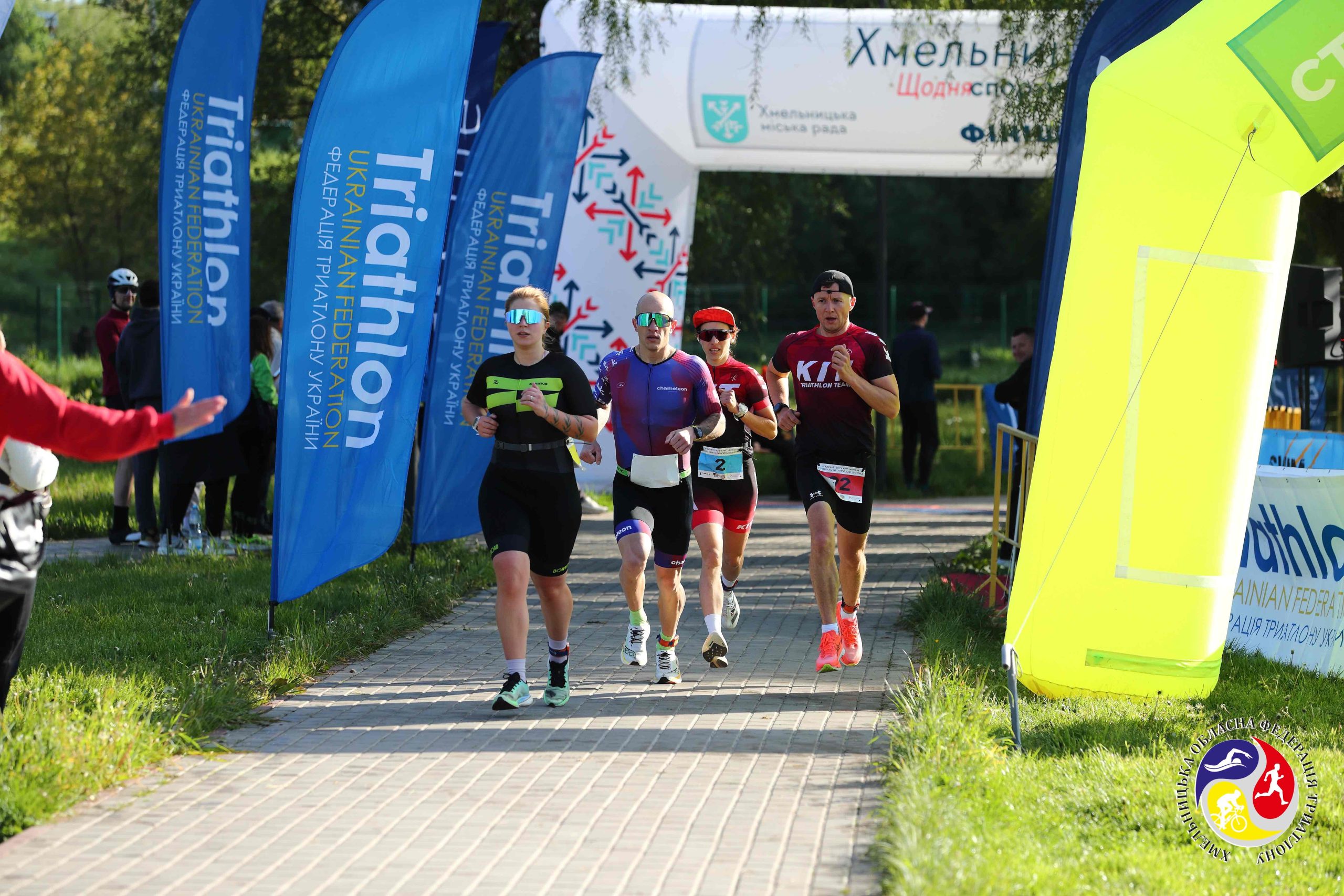If you are an endurance athlete, chances are, you’ve heard something about lactic acid.
And not from the good side.
You might have heard that lactic acid is an unpleasant sensation that your muscles are on fire during a hard workout.
In fact, that is not completely true.
Your body uses lactic acid as a fuel source and to signal where you need healing.
Many endurance athletes are looking for ways to combat lactic acid build up, and the promise of endurance supplements to help them do so can be tempting.
But what supplement helps reduce lactic acid levels and does it really help to manage this sensation?
Let’s explore what the lactic acid is and its functions. We will also share some tips to help you reduce muscle soreness.
The Importance of Muscle Recovery for Athletes
For athletes, recovery is just as important as training itself.
It takes time, dedication, and even discipline to learn to recover properly without rushing your body.
When you push your muscles beyond their normal capacity, tiny tears are created in the muscle tissue.
It’s the repair of that tear that leads to muscle growth.
Without proper recovery, you won’t be able to progress with your training and grow muscle.
That’s when recovery supplements come in.
Some supplements support or enhance protein synthesis in the muscles.
Other supplements help with muscle recovery by reducing muscle soreness.
Muscle soreness is common for beginners. It’s also common for those who have taken their strength training to the next level.
Pain that comes immediately after a workout is often associated with lactic acid buildup. This is followed by delayed onset muscle soreness or DOMS, which lasts longer.
So, what is lactic acid and what role does it play in the muscle recovery process?
Let’s unwrap.
Understanding Lactic Acid
Lactic acid is a chemical our body produces when it burns glucose for energy.
When you push your body hard during activities like sprinting or swimming, you start breathing faster to get more oxygen to your muscles.
Usually, your body uses oxygen to make energy, but when you need more oxygen than your body can provide, it switches to a backup method. This method uses glucose (a type of sugar) to keep you going.
As intensity increases, our bodies demand more energy.
During this process, glucose gets metabolized into pyruvate.
If you have enough oxygen, pyruvate helps produce more energy. But when there’s not enough oxygen, pyruvate turns into lactate instead, which also provides energy.
If you keep going at that intense level for more than a few minutes, lactic acid starts to build up in your muscles, which is a sign that they’re getting tired.
However, our muscles produce lactic acid not only during tough exercises. Anything that makes our body use more oxygen than usual can cause our cells to produce lactic acid.
Carrying heavy stuff, doing home chores, climbing stairs after years of using elevators – these all can cause a short-term increase in lactic acid in your body.
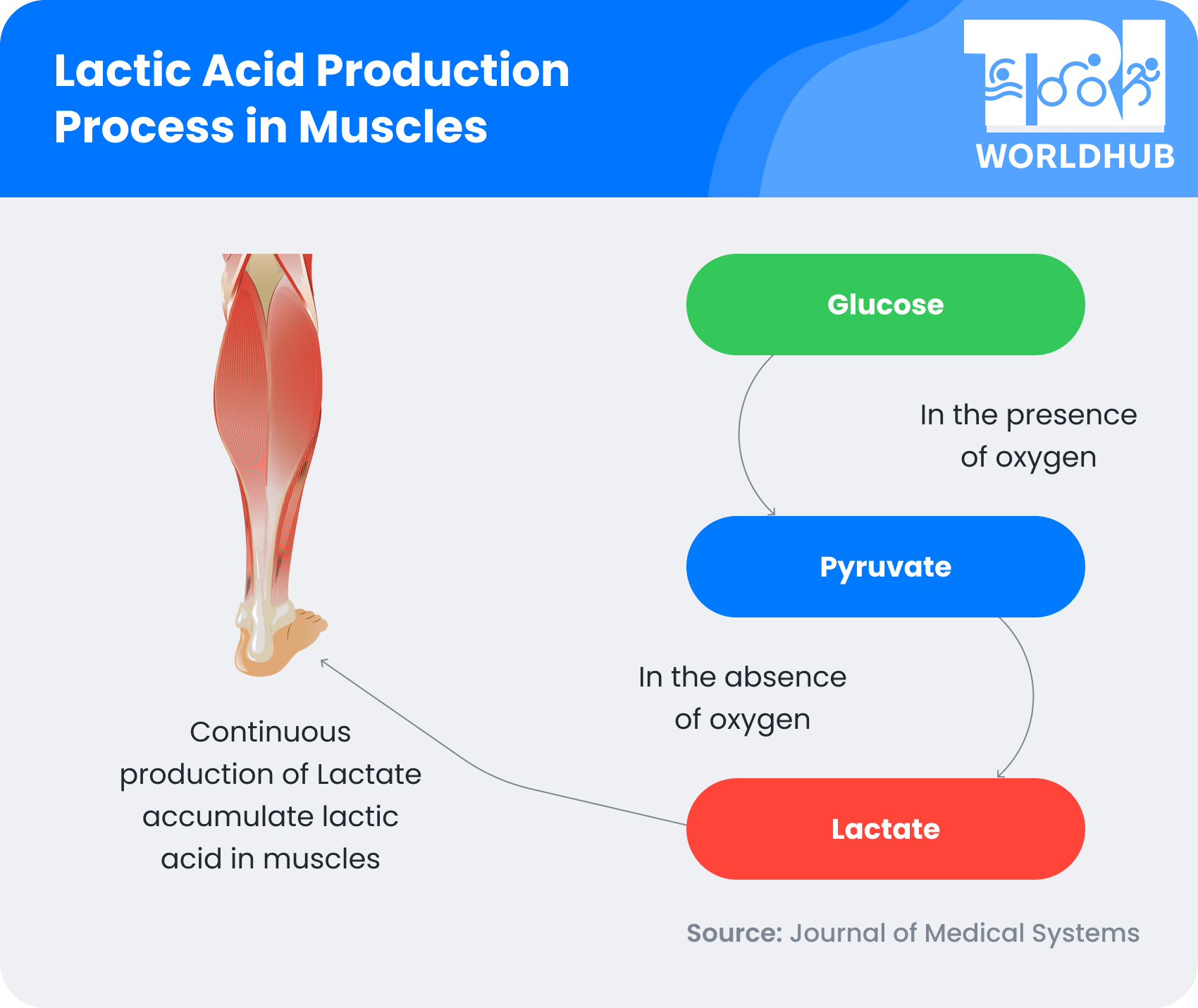
This short-term increase is not dangerous for our overall health and usually won’t cause any symptoms.
Our liver and kidneys filter lactic acid, breaking it down into glucose via gluconeogenesis.
This sugar is then used to generate the energy needed for muscular contraction, especially when oxygen availability is limited.
This helps our body adapt to more intense (or faster) workouts by better utilizing lactic acid as fuel.
It is estimated that approximately 75% of the lactate produced in muscle cells is converted to glucose and used as fuel.
This makes lactate a vital substrate for energy production during exercise and allows athletes to maintain their pace.
Doctors use a sensor to measure lactic acid in your muscles (and how fatigued they are).
This involves a small needle that pricks your muscle to draw a bit of blood for testing.
Normal results show a value between 4.5 to 19.8 mg/dL (0.5-2.2 mmol/L). Where, mg/dL = milligrams per deciliter and mmol/L = millimoles per liter.
Lactate Acid Function
Our bodies fuel muscles with oxygen (aerobically).
When we do a hyper-intense exercise faster than the body can get oxygen to our muscle fibers and other tissues, our cells break down glucose to create the energy we need to keep moving (anaerobically).
Lactic acid is created when you’re generating energy anaerobically.
There are three main functions lactic acid has:
- Energy. Our bodies make lactic acid to fuel cells when they’re working harder than usual.
- Generating glucose (gluconeogenesis). Our liver and kidneys filter lactic acid out of our blood after it’s created in other tissue.They break it down and convert it into new glucose that our body can use for energy in the future.
- Molecular signaling. Lactic acid in our blood is a signal molecule throughout our body. Lactic acid attracts cells in our immune system to heal wounds and fight infections.
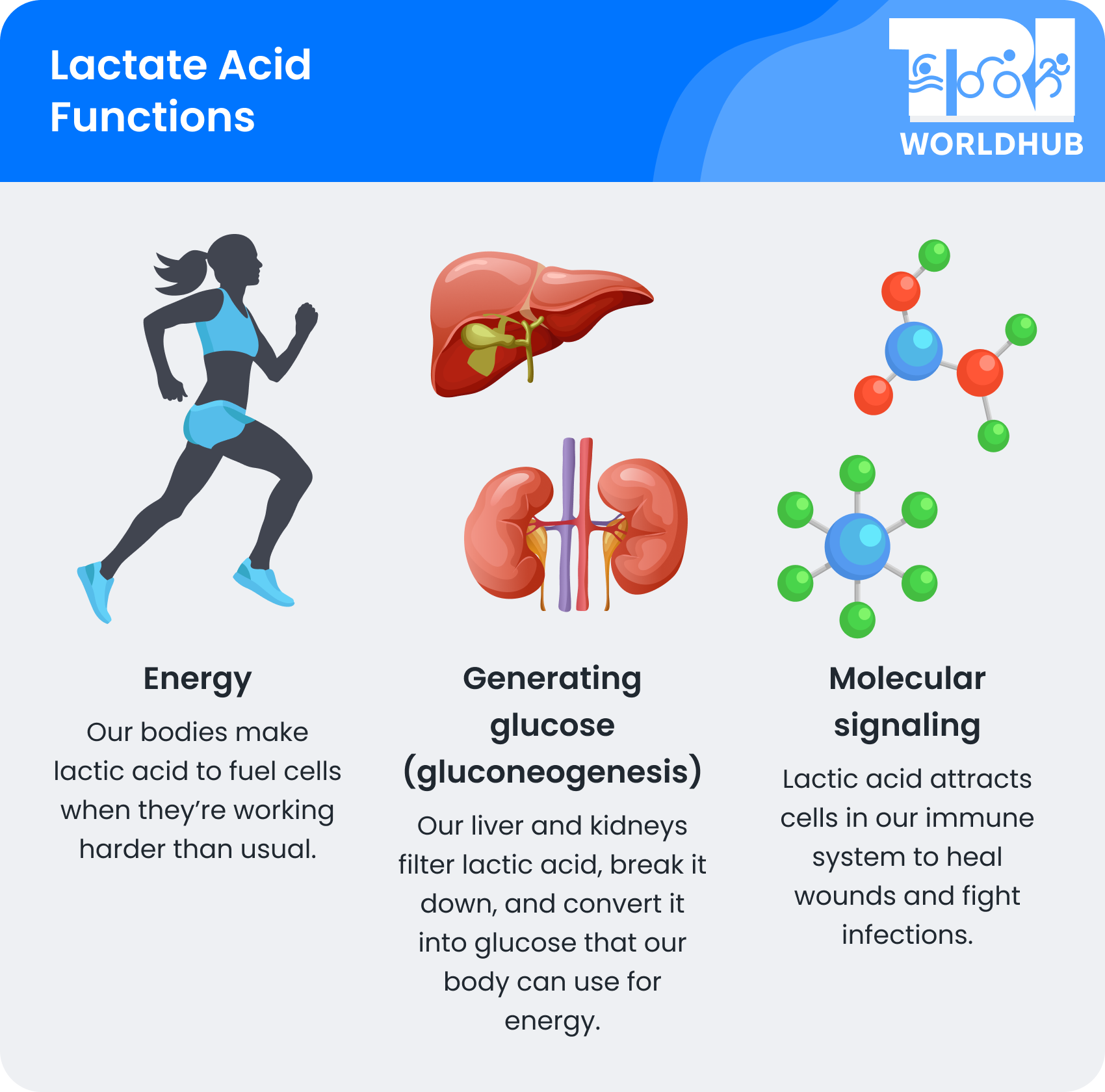
That’s why the Norwegian training method pays close attention to lactate levels. Instead of avoiding it, athletes learn to train right at the edge where lactate starts to rise. This teaches the body to handle and reuse it more efficiently.
Supplements for Reducing Lactic Acid Buildup
Sometimes, our bodies need a little help to manage lactic acid.
Supplements can help the body buffer the increase in lactic acid during high-intensity exercise and improve our exercise performance.
Taking supplements also prevents or slows down the decrease in pH that occurs when lactic acid breaks down into lactate and hydrogen ions.
This way, it is possible to control muscle fatigue and performance.
Here are some supplements that athletes commonly use to manage their lactic acid buildup.
Please consult your coach or doctor before incorporating any of these supplements.
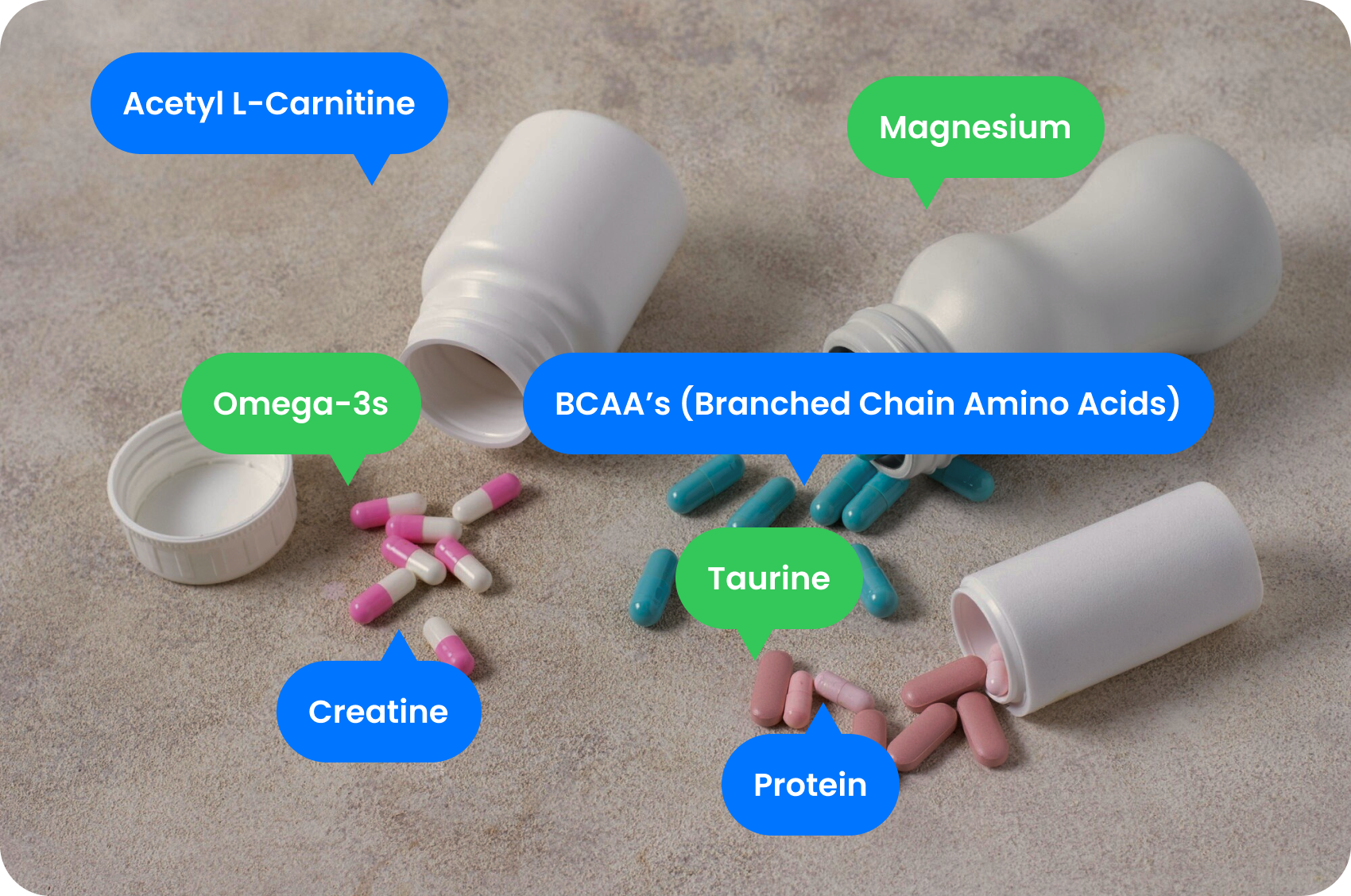
Acetyl L-Carnitine
Carnitine helps transport fatty acids into the mitochondria of muscle cells, produce energy, and potentially remove lactic acid.
Magnesium
Magnesium helps with many physiological processes, including transporting lactate and hydrogen ions out of muscle cells.
Learn how magnesium can help prevent cramps and improve endurance with insights from our magnesium for athletes article.
Omega-3s
Eicosapentaenoic acid (EPA) and docosahexaenoic acid (DHA) in omega-3s enhance metabolic efficiency, reduces glycogen reliance and therefore potentially reduces lactic acid (learn more about metabolic testing for triathletes).
BCAA’s (Branched Chain Amino Acids)
BCAA, or branched chain amino acids, is the name given to the amino acids valine, leucine and isoleucine.
These amino acids help with muscle soreness, give you energy, and can even help with weight loss.
Adding BCAA’s to your routine will help you recover from your workouts and see results faster.
Taurine
Taurine is another supplement that will help you recover from even the toughest workouts.
Taking taurine will increase muscular strength and even endurance.
In fact, one study discovered that athletes were able to run to exhaustion 50% longer after taking taurine supplements for two weeks.
Creatine
Creatine turns into creatine phosphate. Our body uses creatine for energy.
Some studies have found that taking a creatine supplement can help with sore muscles and even boost performance.
Check out our article to learn more about creatine for runners.
Protein
Protein is probably the most useful supplement for full muscle recovery.
It helps the muscle repair faster and more effectively after a tough workout.
It’s even more important if there isn’t enough protein in the diet.
The most popular choice of protein is whey protein. It contains essential amino acids.
Choosing the Right Muscle Recovery Supplements
When you choose muscle recovery supplements, consider your specific needs and goals to get the most benefit without wasting money or time.
Here’s a more straightforward guide to help you make the best choice:
1. Know your goals
- If you’re focused on gaining muscle, look for supplements with plenty of protein, BCAAs, and creatine. These are the building blocks your muscles need.
- To cut down on that post-workout ache, ingredients like omega-3s, tart cherry extract, and turmeric (curcumin) can help reduce inflammation and pain.
- For overall muscle recovery, choose something that combines protein with electrolytes and glutamine. This will help repair muscles and keep you hydrated.
2. Choose high-quality supplements
- Stick with products that use high-quality, pure ingredients without a bunch of fillers or artificial junk.
- Check for third-party testing or certifications to ensure what you’re getting is safe and effective.
3. Match supplements to your diet
- If you avoid animal products, opt for plant-based proteins like why, pea, or hemp. Make sure the supplement fits your dietary preferences.
- Be mindful of any ingredients you might be allergic to, like dairy, soy, or gluten, and choose accordingly.
4. Pick your preferred form
- Powders are great for mixing into post-workout shakes, especially protein powders and BCAAs.
- Capsules are convenient for daily doses of things like omega-3s or creatine.
- Drinks are handy when you’re on the move, but check the label for added sugars or other unnecessary extras.
5. Consider your workout type
- For high intensity and endurance workouts, you’ll need something that helps replenish energy and electrolytes, like a supplement with carbs and electrolytes.
- In case with strength training, you want to focus on protein, creatine, and BCAAs to support muscle mass growth and repair.
6. Opt for science-backed ingredients
- Stick with ingredients that are backed by research. Creatine, BCAAs, and omega-3s have a lot of evidence supporting their effectiveness.
7. Consider budget-friendly options
- Quality often comes with a higher price tag, but it’s usually worth it. However, keep an eye on your budget and choose supplements that give you the best results without breaking the bank.
8. Pay attention to how you feel
- Start with one supplement at a time to see how your body reacts. If you don’t feel any better or have any negative reactions, it might be time to switch things up.
9. Consult a professional
- If you’re unsure or have any health concerns, it’s always a good idea to talk to a healthcare professional before starting any new supplements.
Keep these tips in mind when choosing muscle recovery supplements that work best for you.
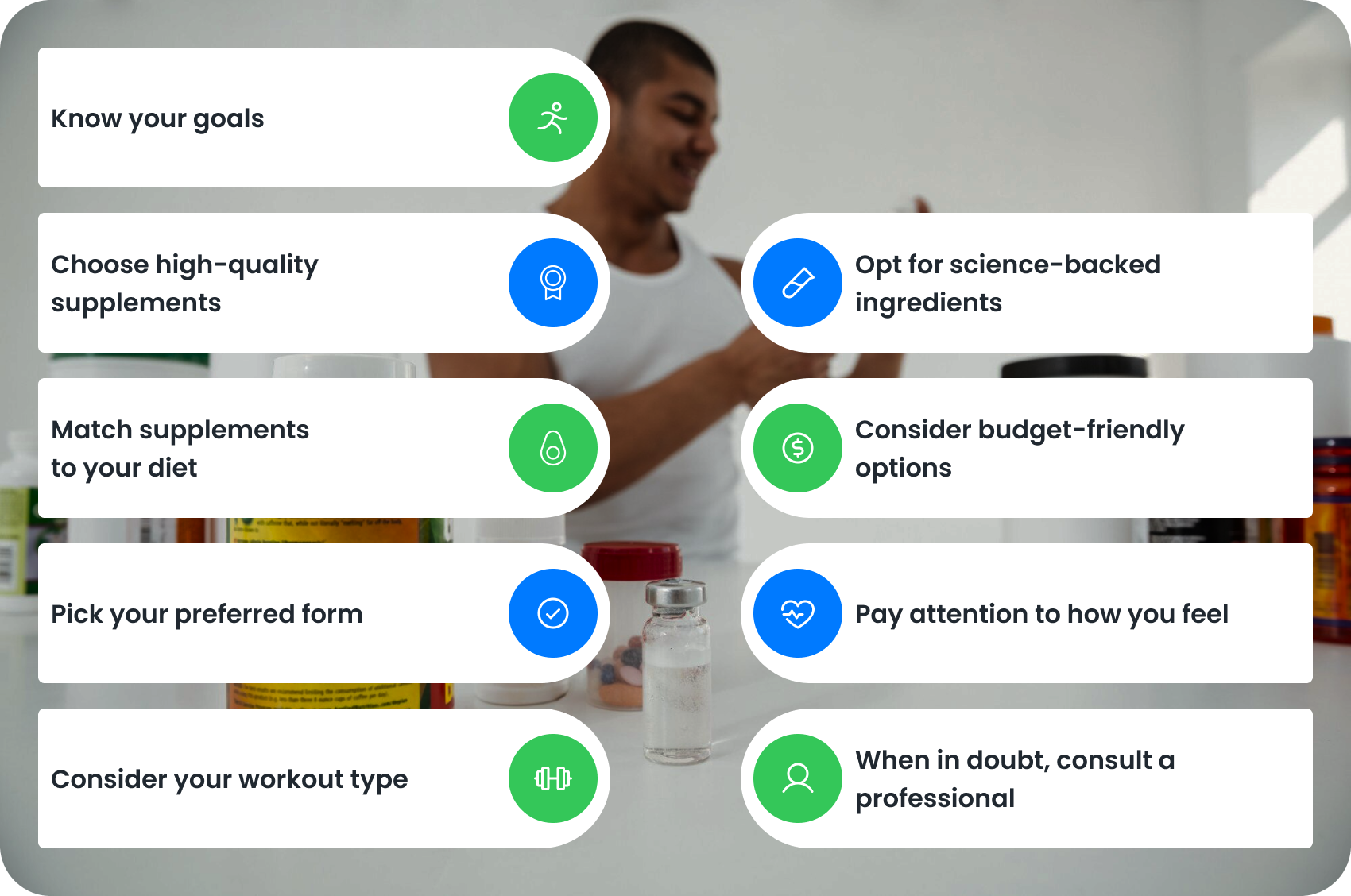
Tips for Reducing Muscle Soreness
Reducing muscle soreness, especially after intense workouts, will help you recover faster and stay on track.
Here are some simple but efficient tips:
- Stay hydrated
Hydration is key to muscle recovery.
Water flushes out toxins and delivers nutrients to muscles. This reduces soreness and speeds up recovery.
If you’re wondering how to carry water when running, this article breaks it down for you.
- Warm up before exercise
A proper warm up increases blood flow to your muscles and makes them more flexible and less prone to injury.
Spend 10-15 minutes warming up with dynamic stretches or light cardio before you start your workout.
- Cool down and stretch
After your workout, take time to cool down and stretch your muscles.
This will reduce muscle tightness, increase flexibility, and prevent soreness.
- Use foam rollers
Foam rolling or self-myofascial release helps to release muscle tightness and increase blood flow. Spend a few minutes on each muscle group after your workout to reduce soreness.
- Get enough protein
Protein is an essential component for muscle repair. Make sure your diet has enough protein, especially after workouts to support muscle recovery and reduce soreness.
- Active recovery
Light activities like walking, swimming or yoga promotes blood circulation and helps muscles recover without adding stress. Active recovery days are just as important as rest days.
- Massage
A massage improves blood circulation, relieves tension and reduces muscle soreness. Even self-massage can help reduce discomfort and speed up recovery.
- Rest and sleep
Muscles repair themselves during rest especially when you sleep. Aim for 7-9 hours of quality sleep each night to allow your body to heal and reduce soreness.
Implement these tips and you’ll be able to manage muscle soreness better and stay active to your fitness goals.
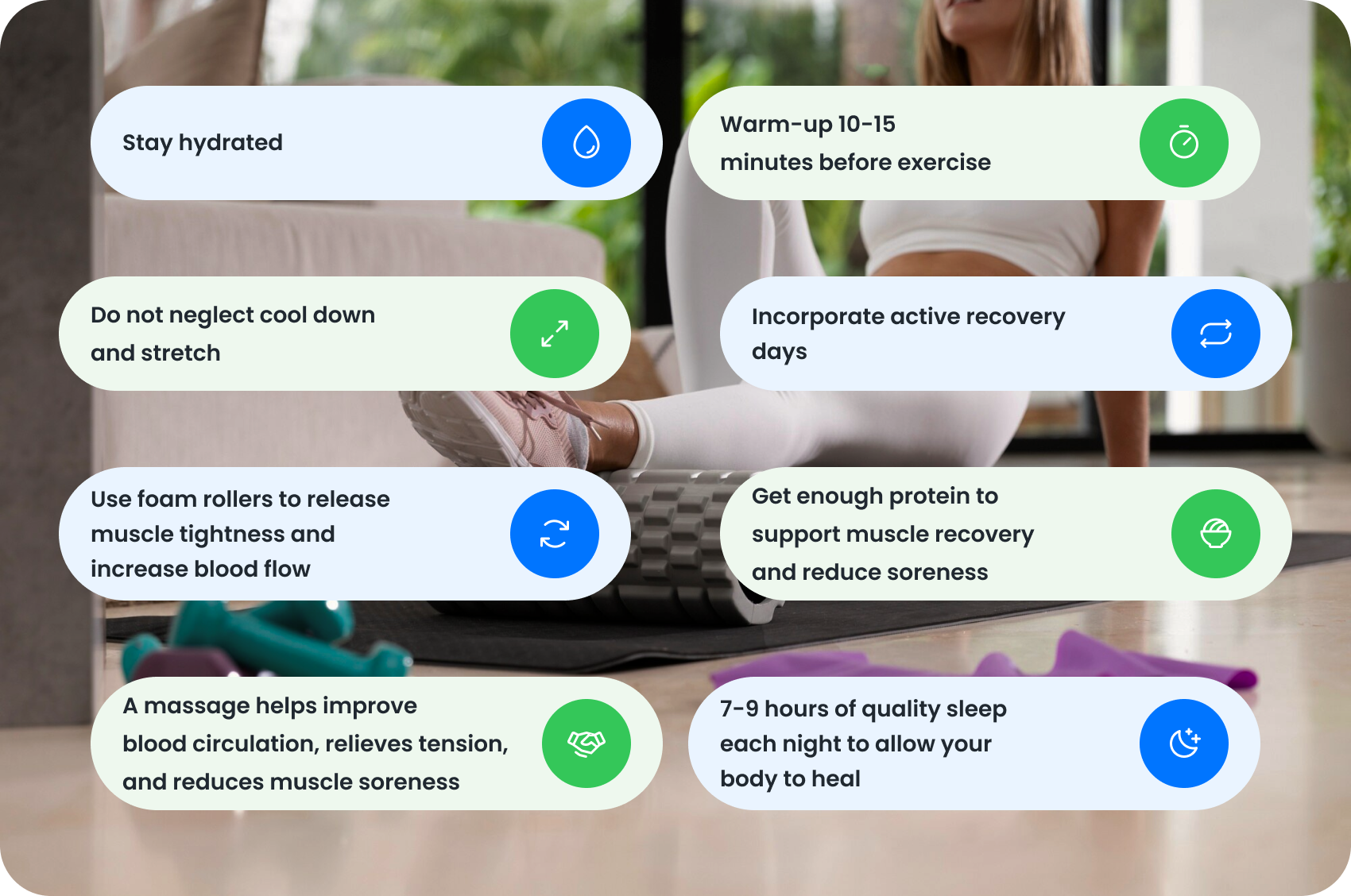
Conclusion
Lactic acid is a by-product of our metabolic processes and a natural response to intense physical activity.
Lactic acid is not the cause of muscle pain but a core player in the body’s energy production and consumption game.
We recommend consulting your doctor or coach before adding any supplement to your diet. Especially if you have any medical conditions.
With professional support, you can customize your supplement intake to your needs to get the most out of it.
Remember that a healthy body is built by healthy habits. So, combine supplements with a healthy diet, regular exercise, and proper rest.
With the right balance of healthy lifestyle and supplements, you can create an environment where your body can perform at its best and be at its peak athletic form.
Choosing fast food wisely can help boost your recovery — get tips and suggestions in our article on fast food after a workout.




